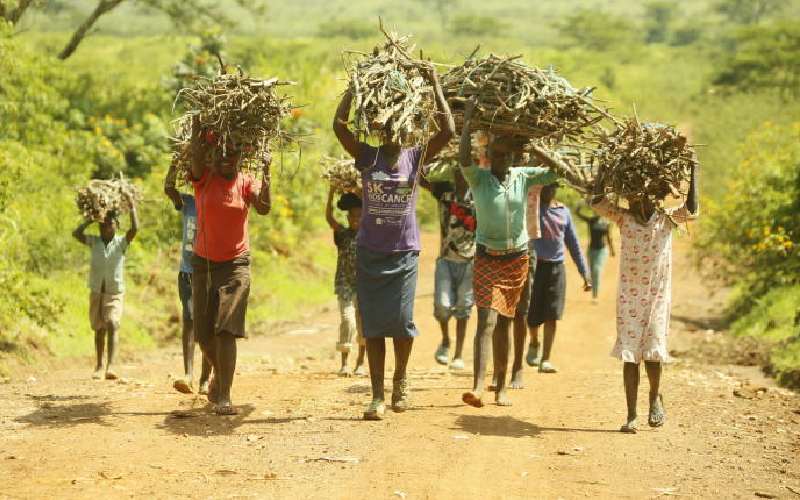Children carrying firewood to their respective homes after fetching them from Mumias Nuclear on June 14, 2020. One of the major implications of the widespread use of solid fuels is its significant impact on climate change. On average, 25 per cent of all black carbon arises from inefficient cooking and lighting. A high concentration of indoor air pollution increases the risk of acute respiratory infections, and causes 4.3 million deaths annually worldwide.
Household fuel use in Kenya currently contributes 22-35 million tonnes of CO2 each year and is equivalent to 30-40 per cent of total Kenya GHG emissions. A great investment is required to grow the clean cooking sector for the achievement of the targets.
Demand for fuelwood and charcoal has long been associated with increased deforestation, forest degradation, and reducing carbon uptake by forests. Over half of all wood harvested worldwide is used as fuel.
Burning solid fuels for cooking emits some of the most significant contributors to global climate change; carbon dioxide, methane, and other ozone-producing gases such as carbon monoxide, as well as short-lived climate forcers like black carbon. The Stockholm Environment Institute 2013 report states that the global potential for greenhouse gas emission reductions from improved cookstove projects is estimated at one gigaton of carbon dioxide equivalent (CO2e) per year. Carbon markets can incentivise reducing these emissions. KEEP READING
One of the leading sources of Household Air Pollution (HAP) is the use of solid fuels and kerosene in traditional and inefficient stoves such as open fires, which leads to the emission of large amounts of pollutants such as particulate matter, carbon monoxide, hydrocarbons, oxygenated and chlorinated organic compounds. With fossil fuels like kerosene, all the emissions contribute to climate change. With biomass fuels like crop residues, fuelwood, and charcoal, some of the CO2 that is emitted when the fuel is burned may be recovered when new biomass grows.
Acute lower respiratory infections are considered the second largest cause of death and are linked to 26 per cent of all deaths reported in hospitals in Kenya. Other diseases linked to HAP exposure include ischemic heart disease, chronic obstructive pulmonary diseases, and stroke. Lower Respiratory infections such as pneumonia and acute bronchitis have been the greatest contributor to HAP-related deaths in Kenya. According to the Clean Cooking Sector Study, it is estimated that HAP claims up to 21,560 lives yearly.
Women and children are the most affected as they spend a lot […]
